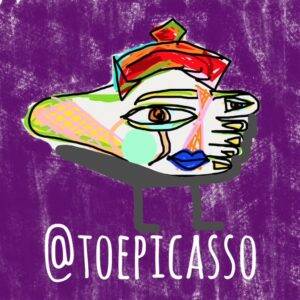Bunion Pain
A bunion is a progressive ailment. They might not hurt at first but as the bunion gets worse, pain usually becomes a factor. It is impossible to tell when a bunion will start to hurt but once it does, it might be impossible to live with the pain.
If you’re on your feet for work, you might have to consider finding a job that allows you to sit most of the time but a career change is usually not an option. If you can sit down at work, you still can’t live with bunion pain. If you can’t walk with friends or play with grandkids, your painful bunion is having a direct negative impact on your lifestyle.
Bunion pain can become unbearable. It can make a day seem years long, and it can really get on your nerves. After a day on a painful bunion, you might be ready to snap at anyone for any reason.
Living with bunion pain is not an acceptable long-term solution. What can you do?
If you’ve got bunion pain, the best thing to do is to consult with a qualified professional such as a Doctor of Podiatric Medicine (DPM), a Podiatrist or a Chiropodist. The DPM at Northwest Surgery Center gives free consultations.
Temporary Bunion Pain Relief
There are a few options to possibly find temporary relief from bunion pain. Unfortunately, the easy, inexpensive methods work best for mild bunions, when they work at all.
Easy, inexpensive ways to try to stop bunion pain include:
Bunion Splints – also called bunion correctors. There are many different types of apparatus that attempt to artificially force the big toe back into alignment and/or force the bunion back into the foot. Unfortunately, bunion splints don’t fix bunions. Bunions are caused by a complex imbalance within the foot. Once the imbalance starts, it will progress and external forces will not re-establish equilibrium.
Bunion Pads – There are many different types of soft material that are meant to protect bunions from external pressure such as shoes. While these might help alleviate the pain caused by pressure on the bunion, they do nothing to fix the internal problem.
Ice and Elevation – If you’re suffering from throbbing bunion pain at night, elevating your foot and applying a cooling compress or ice might temporarily alleviate some of the pain.
Shoes for Bunions – Shoes that are made for bunion sufferers are wider than normal shoes, and are designed to not put pressure on the bunion. They do nothing to fix the bunion. While they may offer temporary relief compared to regular shoes, they are not a permanent solution.
Bunion Exercises – Many toe and foot exercises claim to reduce bunion pain and slow a bunion’s progression. Detailing them is beyond the scope of this article. I have not seen any medical evidence supporting such claims. This is not referring to post-surgery bunion exercises, which are important to the healing process after bunion surgery.
How to Stop Bunion Pain – Long-Term Solutions
Bunion Surgery – In most cases, the only way to stop bunion pain for the long-term is thru surgery. This used to be a horrendous diagnosis because old-fashioned open-foot bunion surgery is infamous for being one of the worst, most painful surgeries out there.
This is no longer the case, thanks to a procedure called Minimally Invasive Bunion Surgery, pioneered by Northwest Surgery Center for well over 20 years. With this type of bunion removal surgery, patients literally walk out of the procedure and drive themselves home. Many report minimal to no pain, even after the local anesthesia wears off. The entire procedure lasts less than 2 hours, including pre-op and post-op.
You no longer have to suffer from bunion pain, now that minimally invasive bunion surgery is an option. Northwest Surgery Center’s clients call their bunion surgery “an excellent experience”. How many bunion surgery centers can say that? Not many.
Post-Surgery Bunion Pain Relief
As mentioned earlier, old-fashioned open-foot bunion surgery is one of the most painful surgeries of them all. The various procedures are brutal and post bunion surgery pain management is slow and often ineffective.
Minimally invasive bunion surgery, on the other hand, requires almost no pain relief because there is almost no pain involved throughout the entire recovery period. If you’re interested in minimally invasive bunion surgery, contact Northwest Surgery Center today to see if you’re a candidate.
Related Questions About Bunions
-
What does bunion pain feel like?
Bunion pain feels like an aching at joint of the big toe. It often hurts when there’s pressure under or on the side of the big toe joint. Bunions might also hurt when the big toe moves. Bunion pain often throbs at night.
-
How do I relieve throbbing bunion pain at night?
In some cases, throbbing bunion pain at night can be temporarily diminished by elevating the affected foot and applying a cold pack to the bunion.
-
Where is bunion pain located?
Bunion pain is located at the main big toe joint, where the big toe joins the foot. Bunion pain usually hurts most when there is pressure on the joint of the big toe and when the big toe moves.
LinkedIn Profile Link: https://www.linkedin.com/in/brant-mccartan-1a257a7/

Leave A Comment